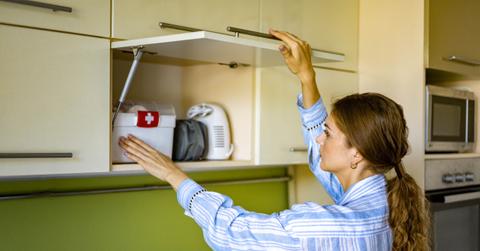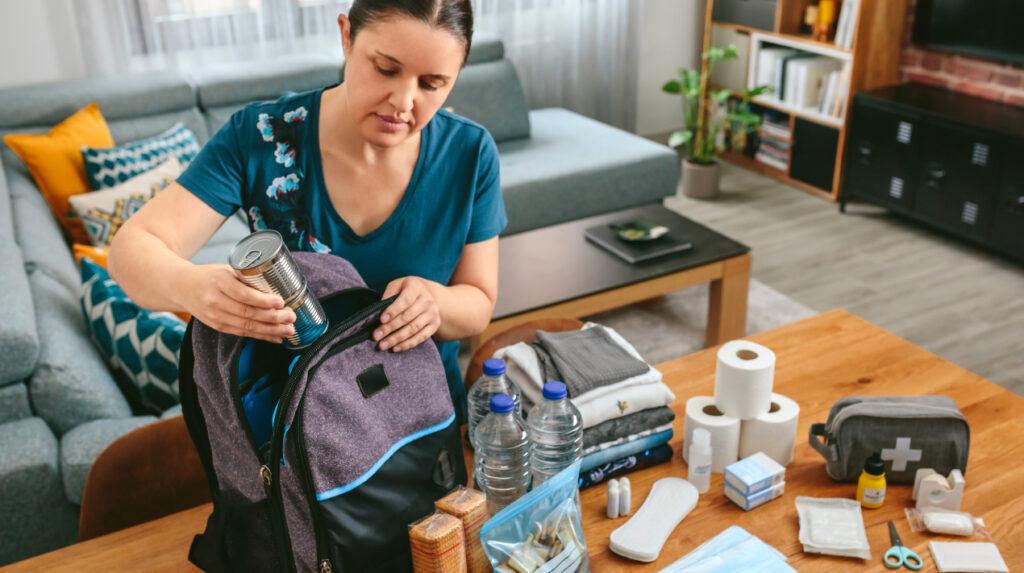How To Plan For Natural Disasters And Emergencies

Now more than ever is the time to prepare yourself in case of a natural disaster. As we’re dealing with the landfall of tropical storm Ophelia on the east coast, we’re still only halfway through hurricane season. With an uptick in hurricanes, wildfires, and other types of emergencies, it is prevalent to know what to do in those situations. Going through a disaster requires preparedness, including having kits ready and plans for evacuation.
The overall importance of preparedness is a major issue in our country, and Monica Sanders, founder of “The Undivide Project” and a Clorox spokesperson, works to advocate for disaster preparedness in underserved communities.

She’s a faculty member at Georgetown University Law Center and a senior fellow at the Tulane University Disaster Resilience Leadership Academy, and sharing her advice on preparedness is part of her everyday life. She has even served as a senior committee counsel for both the House of Representatives and Senate Committees on Homeland Security, overseeing disaster response and recovery programs.
We caught up with Sanders, in the middle of her hectic work schedule during this season, to talk about how to prepare ourselves and our families for natural disasters and emergencies:
1. Prepare a “Go Kit.”

“For a single person, the ‘Go Kit’ is a lot easier. When I was in that situation, I just had everything in a backpack because everything would fit in there. I put it in a coat closet because it was easy for me to get to in the event that I needed to leave quickly. I would have cash, a change of clothes, medications, a solar charger for my phone, and a tank of gas in my car if possible,” she said. “Now, when you’re talking about a family unit, and a lot of us are in intergenerational families, we might have people in our family that are older, as well as young children that need to be looked after. So one thing I do for both of those populations is write names, addresses, and contact information on a luggage tag or a lanyard in case you get separated.”
She recommends that you put things to entertain yourself or your family in your kit, like books and toys. If you have an infant, don’t forget diapers or formula.
2. Know your evacuation plan.
Depending on where you live in the country, your evacuation routes will be different. If you live in a big city, you need to familiarize yourself with public transportation routes. If you’re coastal, you’ll need to determine where the closest shelter will be.
“The U. S. has a system of evacuation routes and people need to know what they are and how to evacuate using them,” Sanders said. “We need to do early communication about checking to see if shelters except pets or if they have multilingual employees working at the shelter. Another piece of it is knowing which organizations actually provide resources. The American Red Cross helps with hotel vouchers in case there’s no shelter in place, and First Harvest and other food banks offer nutrition support. Determining the best evacuation plan for you or your family all goes into preparedness.”
3. Brace for the financial and psychological impact.
The impact of a natural disaster can be felt both financially and psychologically, so being as prepared as possible with a ready-to-go kit and financial resources set aside are important.
“Humans are attached to a sense of place. When you lose where you live and where your family lives in a very short amount of time, it affects you. Our financial means can’t keep up with that, or we’re not prepared to keep up with it,” she said. “When we’re talking about a serious event, we’re talking about plane tickets. Your insurance, if you’re fortunate enough to have it, will have a deductible, and that can cost $500 or more. Not to mention, you might be losing hundreds of dollars a day for every day that you can’t work. That can add up to someone not being able to rebuild their home. This is how we get mass displacements, because people will go somewhere where they need to work and start working, and then not have the means to return and rebuild.”
In the most extreme cases, people can face bankruptcy, homelessness, or the loss of a loved one, which also causes psychological distress, according to Sanders. In order to brace for the financial impact, as well as the psychological one, save as much money as possible to go into your kit.
Natural disasters and emergencies are always going to be relevant, so knowing how to prepare is imperative for yourself and your family.






